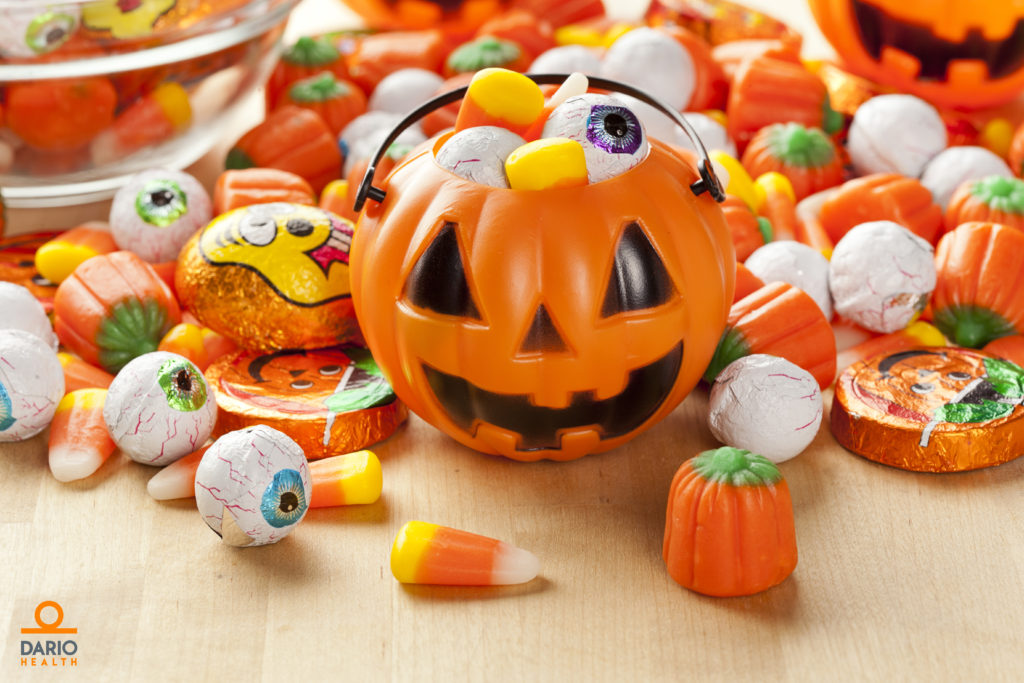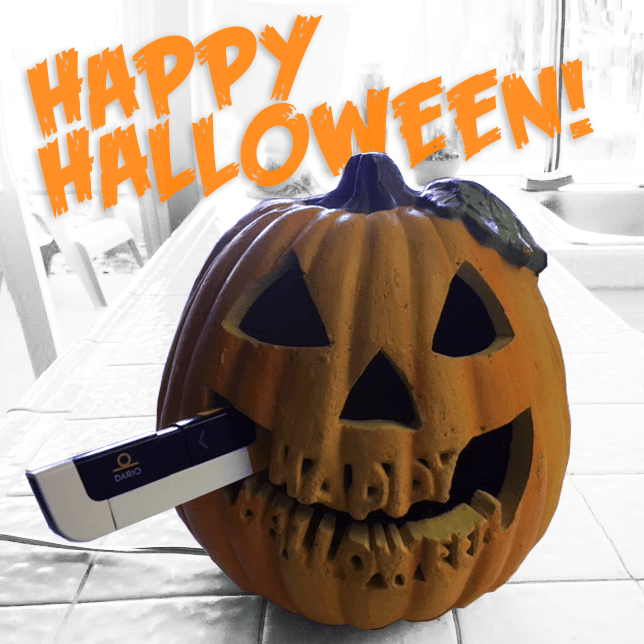Trick or Treat: How to Celebrate Halloween Without the Sugar Spike
The ghosts and goblins may scare you, but don’t let all the readily-available sweets and treats keep you from enjoying this fun-filled Holiday.

By Susan B. Sloane, BS, RPh, CDE
Halloween can be scary no matter what age you are, and if you’re living with diabetes, this holiday can be an even spookier time. All the candies, sweets, and endless parties may make you nervous about managing your blood glucose and preventing glucose spikes.
But you don’t have to be afraid this Halloween because there are countless ways to enjoy the holiday without worrying about sending your blood sugars soaring through the roof.
We understand that it’s extremely difficult to completely refrain from enjoying sweet treats, nor should you! That’s why we want to give you some tips on how to enjoy this year’s Halloween celebrations without feeling left out of the fun – whether it be a children’s party or an adult gathering.
- Use fresh fruit wherever possible. You can make pumpkins out of tangerines or ghosts from bananas. You can even melt a little dark chocolate and sprinkle it on the fruit, but remember that moderation is the key to managing your blood glucose.
- There are some fabulous sugar-free cookie recipes made with oatmeal and include other ingredients like applesauce and nuts for added flavors. One of our favorites is our Nutty Almond Butter Oat-Banana Cookies. They are super easy to make and make a great alternative for Halloween.
- Plan fun activities that don’t involve snacking out. Hayrides and haunted houses are tons of fun for both and adults and children alike.
- Remember that some treats are significantly healthier than others. Although many will raise blood sugars, some work more rapidly than others and cause a fast surge of glucose resulting in glucose spikes. Examples of candies that will cause a rapid rise in blood sugars are those with concentrated sugars such as skittles, chocolate covered raisins, and gumdrops. Candy that gets absorbed more slowly such as chocolate covered nuts and plain dark chocolate are better options if you want to treat yourself.
- Be aware of “natural” ingredients that can pack a large sugar punch such as raisins and dried fruit. These can sound healthy, but they can cause blood sugars to rise rapidly.
- Know that certain foods can help to “dampen” surges in blood sugars. Anything with lots of fiber can help prevent blood sugar spikes. Some examples of healthy fiber filled foods are popcorn, nuts, and fresh vegetables like carrots. Pumpkin puree and even baked pumpkin seeds can create healthy treats that are low in sugar and carbohydrates.
- When hosting a party, remember that eating is only part of the fun. Games and socializing, as well as costume contests all help to make Halloween fun. Don’t make the food the centerpiece but instead, make it only a small part of the party. You can even have everyone bring a dish and hand out prizes for the most inventive healthy food items. Everyone loves a good competition; you will be amazed at how engaged your guests will be.
- Try not to go crazy with items labeled sugar-free. Sugar-free products often contain sugar alcohols such as mannitol and sorbitol that function as sweeteners. These ingredients can cause stomach issues, especially if you eat a lot of foods containing them. Also, sugar-free products may contain a lot of fat and calories, so they are not always the best choice when it comes to finding alternative snacks.
- Alcohol is frequently served at adult Halloween parties. Keep in mind that alcohol not only can contain extra calories but more importantly, alcohol consumption can lead to low blood sugars in people living with diabetes.

Halloween can be a challenging time, especially for parents that have children living with diabetes. My two boys have diabetes, and here’s a small anecdote about how my family made Halloween fun for everyone when they were growing up.
Every year we set up a Halloween “store.” My boys would come home from a party or trick-or-treating with huge bags of goodies. We’d empty out the bag on the counter and separate the snacks into different categories. We then set different “prices” for each of the different categories we had.
For example, they would get five cents for chocolate, ten cents for lollipops, and so on. We added up the amount in each category, and the boys would “cash in” the candy. They would later get the money to save up, buy toys or other things they may have wanted at the time. We also left certain favorite treats for special occasions and for those times when blood sugars got low. This way they could still enjoy trick-or-treating and didn’t feel left out.
Our last piece of advice is to remember to test your blood sugars before and after a party to get an understanding of how your body is reacting to what you ate or drank. We know that Halloween is a challenging time and if you stray off course once in a while, it’s not the end of the world. Just be well informed about what you’re consuming and understand your numbers when testing.
Stay safe this holiday season and Happy Halloween!
About Susan Sloane
Susan B. Sloane, BS, RPh, CDE, has been a registered pharmacist for more than 29 years and a Certified Diabetes Educator for most of her career. Her two sons were diagnosed with diabetes, and since then, she has been dedicated to promoting wellness and optimal outcomes as a patient advocate, information expert, educator, and corporate partner.
Susan has published numerous articles on the topic of diabetes for patients and health care professionals. She has committed her career goals to helping patients with diabetes stay well through education.
<b>Medical Disclaimer</b>
The articles provided on this website are for informational purposes only. In addition, it is written for a generic audience and not a specific case; therefore, this information should not be used for diagnostic or medical treatment. This site does not attempt to replace the patient-physician relationship and fully recommends the reader to seek out the best care from his/her physician and/or diabetes educator.
DAR -0096 RevA 06/2019







